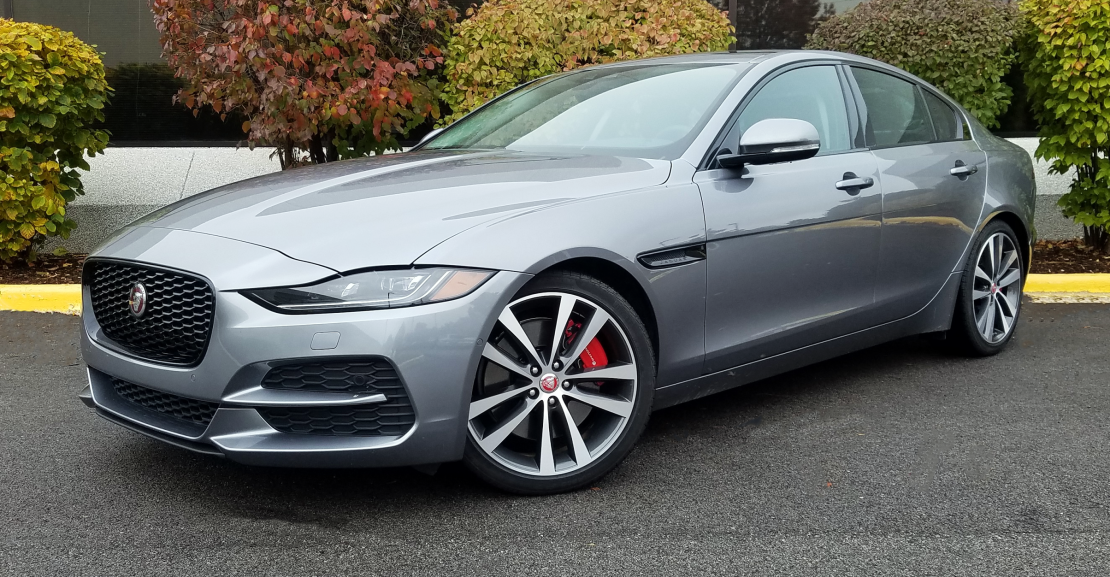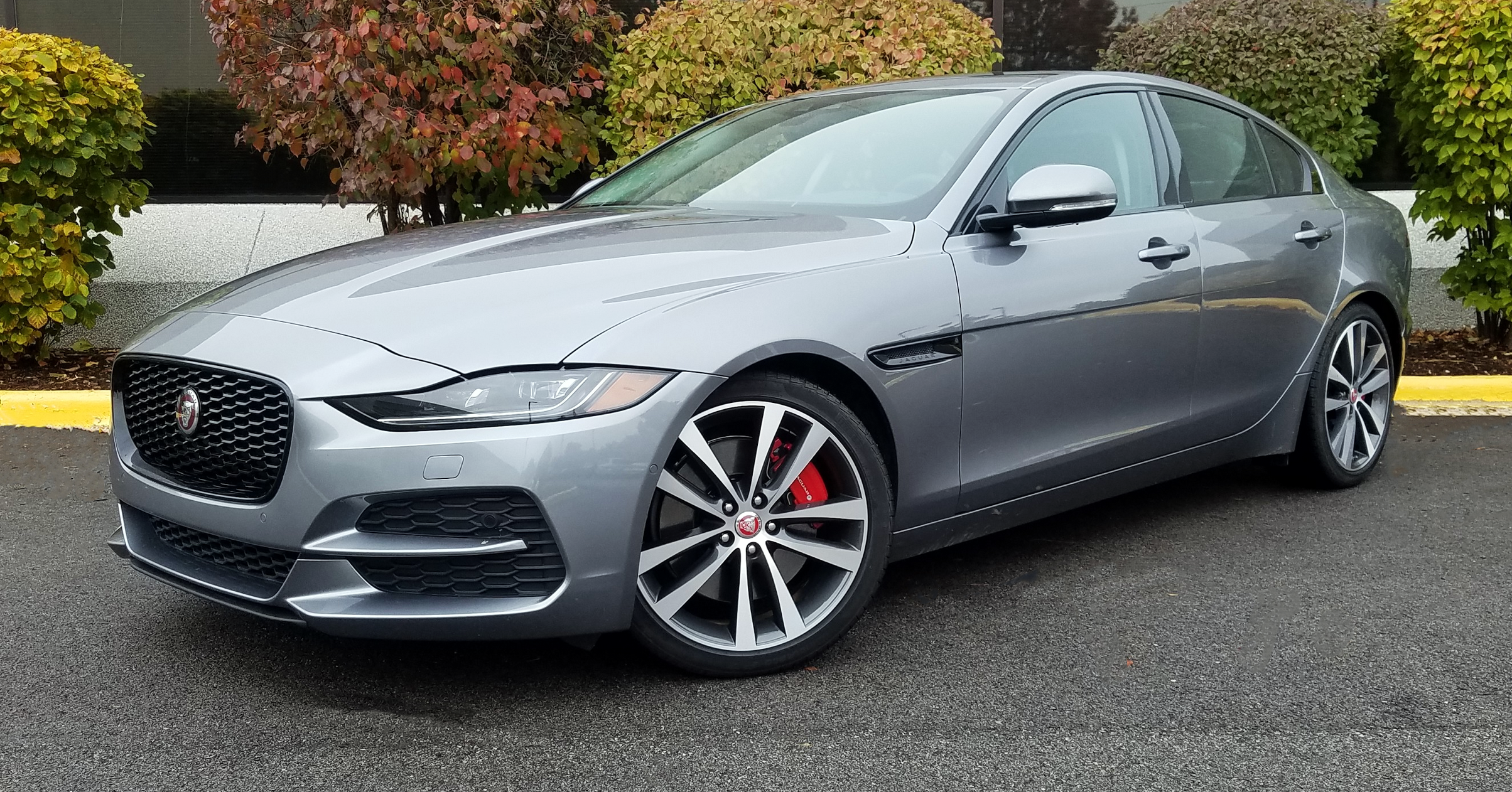
 2020 Jaguar XE P250 S
2020 Jaguar XE P250 S
Class: Premium Compact Car
Miles driven: 252
Fuel used: 10.5 gallons
Real-world fuel economy: 24.0 mpg
Driving mix: 60% city, 40% highway
EPA-estimated fuel economy: 25/34/28 (city, highway, combined)
| CG Report Card | |
|---|---|
| Room and Comfort | B |
| Power and Performance | B- |
| Fit and Finish | A- |
| Fuel Economy | B |
| Value | B |
| Report-card grades are derived from a consensus of test-driver evaluations. All grades are versus other vehicles in the same class. Value grade is for specific trim level evaluated, and may not reflect Consumer Guide's impressions of the entire model lineup. | |
| Big & Tall Comfort | |
| Big Guy | C- |
| Tall Guy | B- |
| Big & Tall comfort ratings are for front seats only. "Big" rating based on male tester weighing approximately 350 pounds, "Tall" rating based on 6'6"-tall male tester. | |
| Drivetrain | |
| Engine Specs | 247-hp 2.0-liter |
| Engine Type | turbo 4-cyl |
| Transmission | 8-speed automatic |
| Drive Wheels | rear |
Fuel type: Premium gas recommended
Base price: $39,900 (not including $995 destination charge)
Options on test vehicle: Technology Pack ($1950), Drive Pack ($1700), Dynamic Handling Pack ($1615), Connected Navigation Pack ($1365), Convenience Pack ($1200), Cold Climate Pack ($620), Park Pack ($600), Black Exterior Pack ($375), satellite radio ($300), Meridian Surround Sound System ($800), 19-inch 5 Split-Spoke Style 5031 Diamond Turned Wheels ($1400), auto-dimming power-fold heated mirrors with memory ($360), Eiger Grey Metallic paint ($610), 16-way heated/cooled front seats with driver memory ($1500), Ebony Windsor leather seats ($650)
Price as tested: $55,940
Quick Hits
The great: Crisp handling with relatively pleasant ride quality; high level of customizability
The good: Classy, nicely finished cabin; decent fuel economy for a sporty luxury-brand car
The not so good: Spendy options; cramped rear seat; low roofline compromises rearward view
More XE price and availability information
John Biel
“Refresh” can mean different things to automakers when the time comes to perk up a product line that’s been around for a few years but still isn’t ready for a top-to-bottom redesign. For some, changing the shape of the air intake under the front bumper and installing a new-generation “GizmoTRONIC“ infotainment system is considered sufficient. Others take a more holistic approach, like what Jaguar did to its XE premium-compact sedan for 2020.
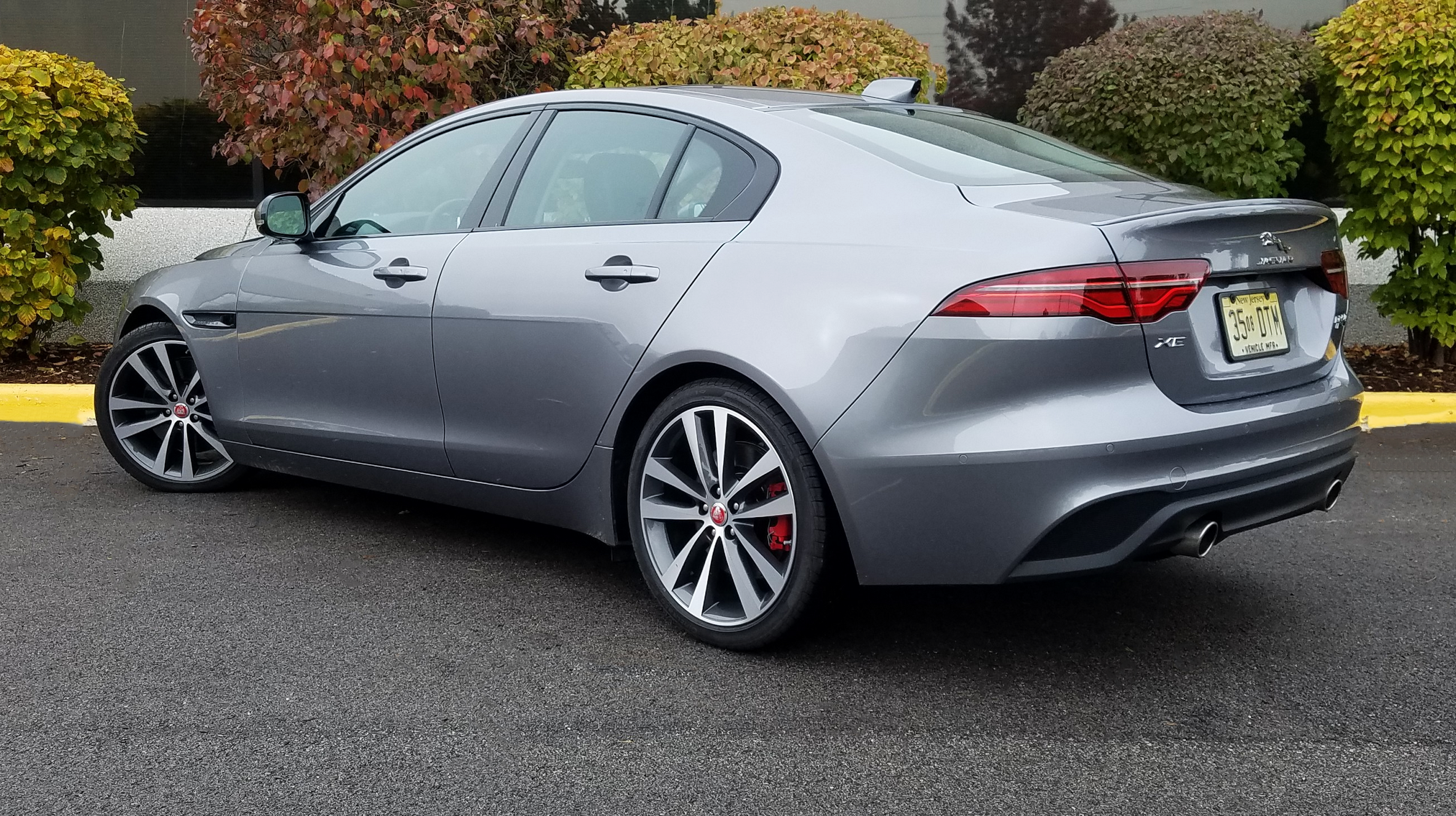
To be sure, Jaguar did indeed diddle with the XE’s front fascia (the resurfaced grille is bigger and bumper openings have grown), and it has advanced its infotainment system (twin-screen InControl Touch Pro Duo is available). However, there’s plenty more that’s new. Working from the outside in, headlight and taillight designs are changed—and their lighting is now LED; the rear diffuser is redone; there’s a new steering wheel; an electronic shift lever replaces a selector dial for the automatic transmission; door panels are redesigned; and leather seats, power front seats, lane-keeping assist, parking sensors, and Apple CarPlay/Android Auto smartphone compatibility become standard.
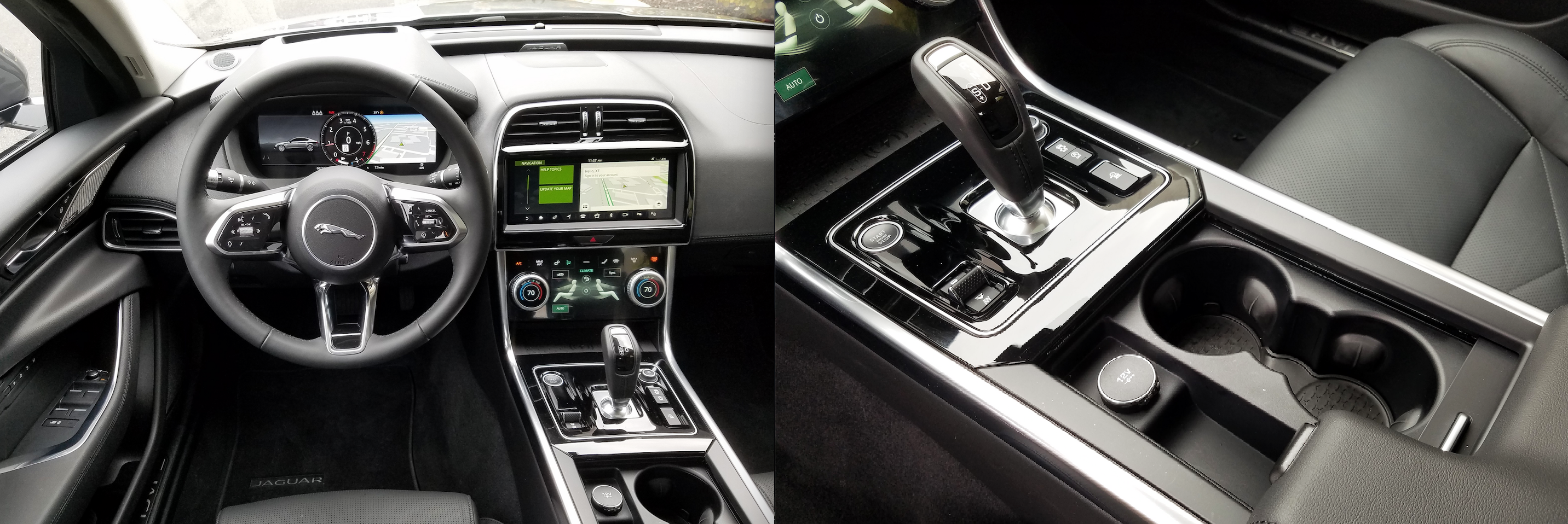
As if that’s not enough, the engine choices for the XE have been simplified. Gone are a 4-cylinder turbodiesel and a supercharged gas V6. There still is a 2.0-liter turbocharged gas four, but it now branches out to two power ratings. Base output for P250-level models like the one that Consumer Guide tested is 247 horsepower (up from 240) and 269 lb-ft of torque. The P300 extracts 296 ponies and 295 lb-ft from this same engine layout. Oh, and the P250/300 descriptors are a change that bring the XE in line with current Jaguar Land Rover naming conventions.
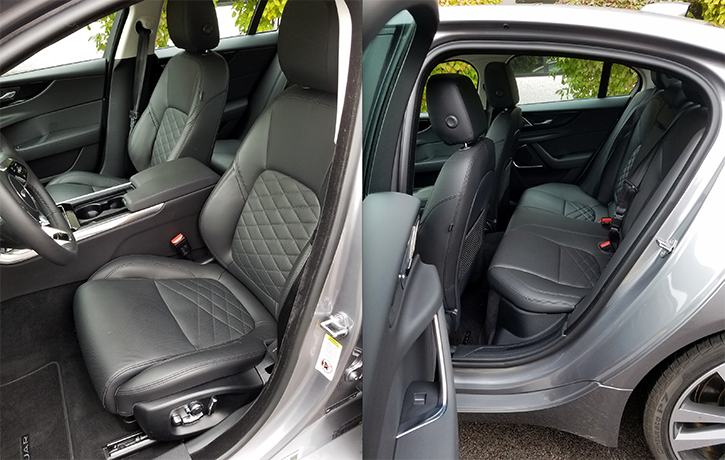
Channeled through a smooth and helpful 8-speed automatic transmission, the P250 engine delivers performance that’s solid, if maybe not soul-stirring. It helps that the torque peak is breached as early as 1300 rpm, so with virtually no turbo lag the XE feels like it’s getting away briskly. JaguarDrive Control lets drivers operate in “Comfort”, “Eco,” “Dynamic,” or “Rain/Ice/Snow” driving modes, and flicking the console-sited toggle lever to Dynamic adds a little urgency to the going. Rear-wheel-drive P250s like the test car have EPA fuel-economy ratings of 25 mpg in the city, 34 mpg on the highway, and 28 combined. (All-wheel drive plucks one mpg from the city figure.) This driver logged 140.2 miles in the car, with 55 percent city-type operation, and saw 25.5 mpg.
Test Drive: 2019 Volkswagen Arteon R-Line
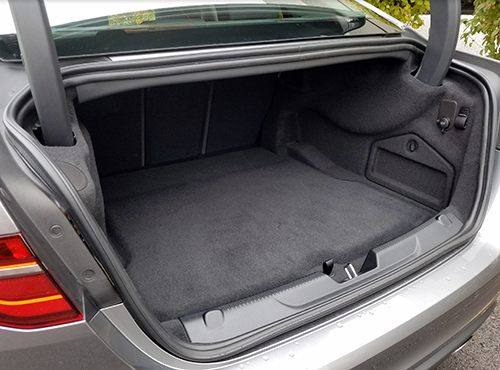
Formed from a weight-paring aluminum-intensive body structure, like other Jags, the XE is a pleasing handler that’s not at war with itself in corners or lane changes. One of Dynamic mode‘s tricks is to tighten up the steering feel to a degree. The small Jaguar rides well, and quietly, even on optional 19-inch wheels. Brake action is quick and predictable.
The XE P250 comes only in “base” S trim, while the P300 has a performance-tinged R Dynamic equipment complement. A rear-drive 250 starts at $40,895 with delivery (add two grand for all-wheel drive), but can be optioned to within an inch of your bank account’s life. Some—some—of the CG car’s extras were the 19-inch alloy wheels ($1400); Eiger Grey paint ($610); Black Exterior Pack with the grille and surround, window surrounds, and fender vents in gloss black ($375); and Convenience Pack with powered trunklid, power-adjustable steering column, extra power sockets, and keyless entry ($1200).
Technology Pack additions ($1950) include Touch Pro Duo and an improved 12.3-inch digital gauge cluster. The former pairs a standard 10-inch upper display screen with an added 5.5-inch lower screen. Things like navigation, media, and telephone are managed through the upper screen, while the lower one keeps tabs on secondary functions such as climate control and vehicle settings. Audio inputs are fairly direct to select and input via the top screen. The climate controls use big dual-purpose dials for temperature and fan-speed selection: Pulling back on the dial activates fan-speed control, while pushing on it summons temperature control. Other tasks are accomplished at screen touch points. Meanwhile, the driving-gauge display is large, colorful, and easy to manipulate through the steering-wheel thumb buttons.
An inviting interior has ample soft-touch surfaces with varying amounts of underlying “give” and comfortable seats. There’s better room for legs and heads in front than in the back, but two adults of average height can occupy the second row without worry—provided front passengers don’t have to track all the way back in their seats. Still, the XE roofline crimps driver vision to the rear and rear corners somewhat, and the rear doors are narrow at the bottom, which can complicate exits.
Quick Spin: 2019 Lexus IS 350 F Sport
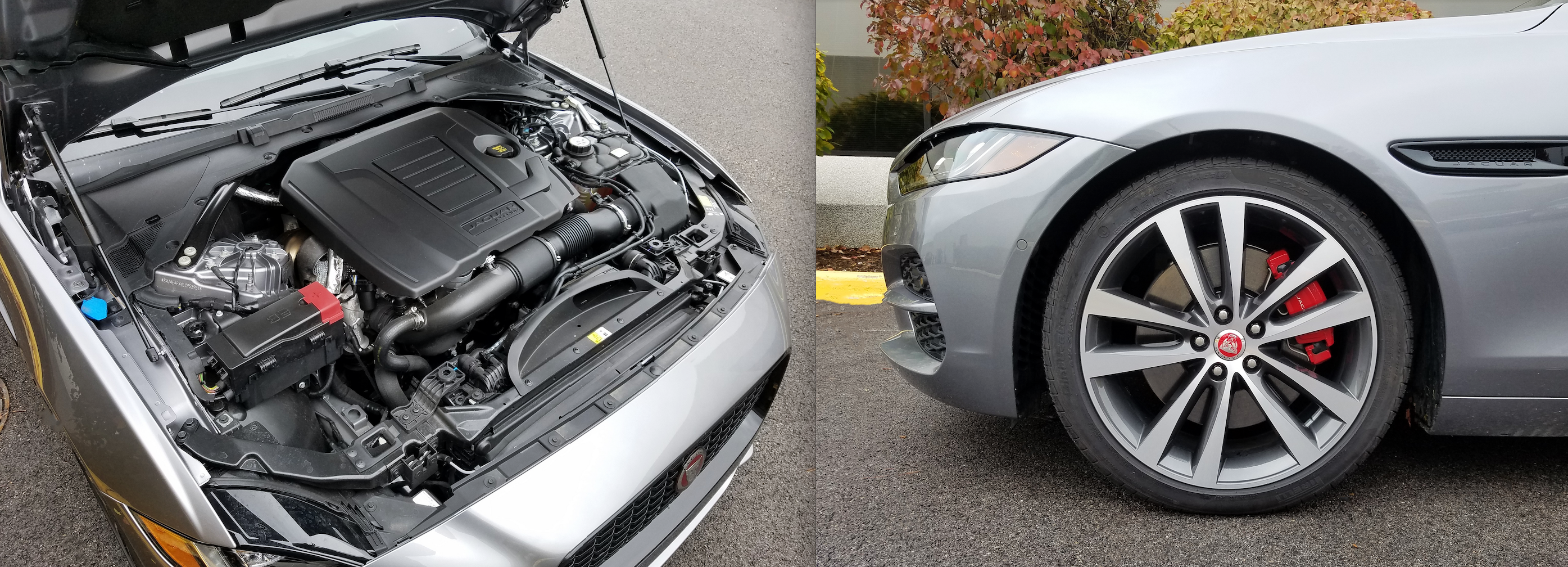
Jaguar says it made improvements to cabin-storage capability for 2020. A sizable glove box is a benefit that is offset by a small-capacity covered console box. Door map pockets are larger in front than they are in the rear, but there is room in all to hold a bottle. Net pouches are attached to the backs of the front seats. Twin cup holders that can be hidden under a sliding panel reside in the console. Another two are built into the pull-down armrest in the center of the rear seat.
The trunk floor is flat and high enough to allow easy loading and unloading, but it restricts the height of objects placed there. Space between the wheel houses is somewhat restricted, however space up to the back of the 40/20/40-split rear seat is good for a car of this size. When the rear seats are folded to create extra load space, they rest nearly flat, but at about 1.5 inches below the level of the trunk floor.
In a premium-compact arena that welcomes some exceptional choices, the Jaguar XE has to play the role of challenger. Freshened as it is for 2020, it is better prepared for that fight.
Test Drive: 2019 Audi A7 Prestige
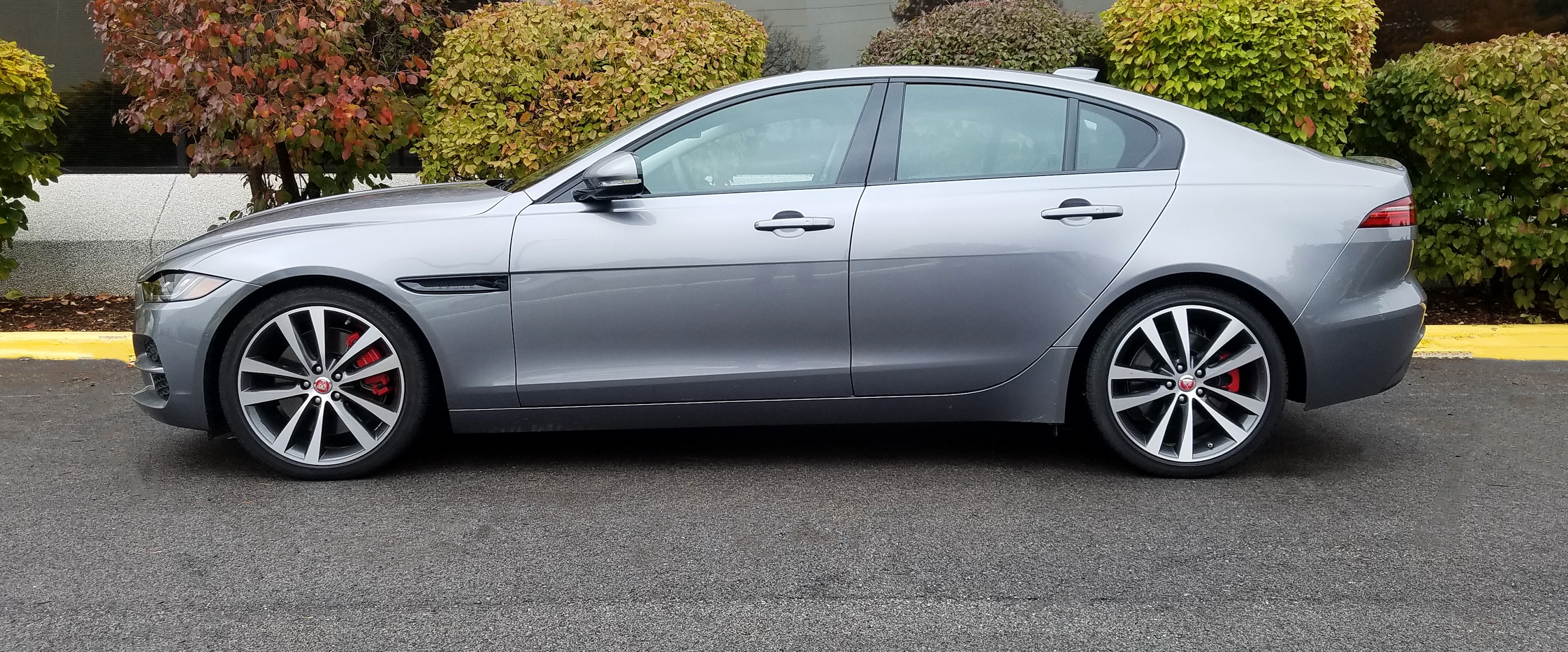
Listen to the Consumer Guide Car Stuff Podcast
2020 Jaguar XE

